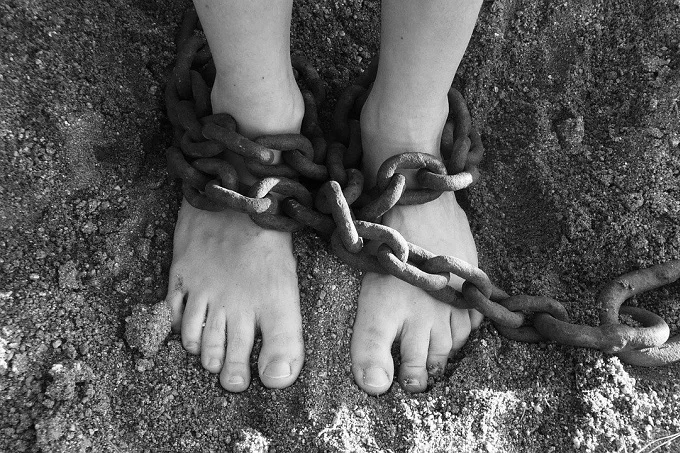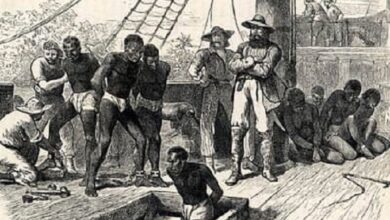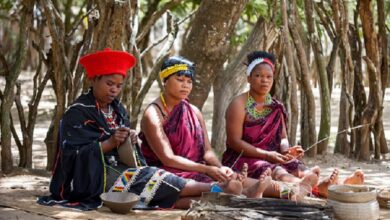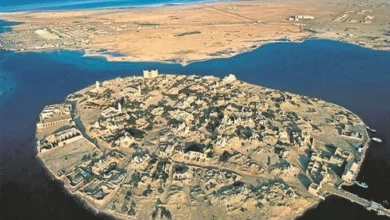Chattel Slavery: most common form of slavery

Chattel slavery is defined as a civil partnership in which one person has ultimate authority over another’s life, wealth, and liberty. Forced workers, forced prostitutes, child soldiers, underage brides in forced marriages, and those in total ownership slavery are among the enslaved (chattel slaves).
The term chattel slavery refers to a situation in which one person owns the whole property of another. Domestic chattel, which does menial home tasks, and productive chattel, which works in the fields or mines, are the two most common types of chattel.
Domestics were those that lived closest to the enslaver due to proximity, and they were typically given greater standing in a slave society. But, since the premise of chattel slavery was that the human was not a person but a thing, saying better rank doesn’t mean anything. This is how chattel is defined. You wouldn’t counsel a chattel slave in the same way you wouldn’t consult your pet. You would not be concerned with the comfort of a tool, like nails, pins, and you would not be concerned with the comfort of an enslaved African. In the eyes of the enslaver, what is chattel is not human. Even if there were adequate regulations to restrict the usage of the slaves, chattel could not be protected by law.
When most people think of the kind of slavery that existed in the United States before the Civil War and that existed lawfully in many areas of the globe as far back as recorded history, they think of chattel slavery.
Slaves were tangible property that could be purchased, sold, exchanged, or passed down through the generations. They might be mistreated, branded, reared, exploited, or murdered. This kind of slavery is still practiced today, mostly in the East African nations of Mauritania and Sudan. Thousands of individuals are enslaved in this manner, despite the fact that it is probably the least common of the modern types of slavery.
Slavery in Mauritania and Sudan is particularly heinous. The African and Arab civilizations are divided by these two nations. A person may be purchased, exchanged, inherited, or given as a gift and become the property of another for the rest of their lives. Village raids have resulted in the arrest of girls as young as ten years old. They use hot metals to brand like cattle to keep them from escaping. Castration and female genital mutilation are regularly used as punishments. An attempt to flee may result in the victim’s Achilles tendon being cut, leaving him or her permanently disabled.
Slavery in Sudan
In recent decades, this war-torn nation has endured interminable civil turmoil, including the Darfur tragedy. Slavery is making a resurgence in Sudan as a consequence of a war conducted by the Muslim north against the Christians and Animists in the south over the last twelve years. “Despite the cessation of the abduction of Sudanese slaves as a consequence of the Comprehensive Peace Agreement of 2005, approximately 35,000 slaves remain in bondage in Northern Sudan,” according to James A. of the Government of Sudan’s Committee for the Eradication of the Abduction of Women and Children. According to the American Anti-Slavery Group, the Arab slave trade has captured black Africans in southern Sudan for generations.
However, during the Second Sudanese Civil War, the number of war captives kidnapped and sold into slavery surged considerably. In 1989, Omar al-Bashir took power and established a dictatorial federal government that backed Arab militias terrorizing the country’s southern parts, assaulting non-Afro Arab towns and robbing them of both property and slaves.
The racial component of such activities has been highlighted in reports to the United Nations Commission on Human Rights. Arab militias armed by the government have been accused of murdering males, enslaving women and children as personal property, or marching them north to be auctioned off and sold. According to Anti-Slavery International, no community in the north is likely to be free of abducted black slaves. The price of slavery has altered throughout time, according to Gasper Biro, a special UN human rights observer. “In 1988, six or seven child slaves might be exchanged for one automatic firearm. In 1989, a lady or kid from the Dinka tribe, a Nile pastoral people who are exceptionally tall and proud, could be purchased for ninety dollars.”
Slave trade in Mauritania
Slavery is a deeply rooted social, cultural, and historical issue in Mauritania. Despite the fact that the national government has frequently prohibited the practice, the most recent restriction being in 2007, many human rights organizations consider it as a window decoration with no enforcement effort.
Today, the descendants of black Africans kidnapped and sold into slavery reside in Mauritania as “black Moors,” or Haratin, and continue to work as slaves for the “white Moors,” or Bidhan. The precise number of slaves in the nation is unknown, and estimates vary greatly. Muslim Berber groups still enslave at least 90,000 darker-skinned Africans.
Perhaps based on a larger definition, other estimates suggest that 600,000 men, women, and children, or 20% of the population, are enslaved by North African Arabs. This country has the greatest proportion of slaves in the world.
These types of slaves above are considered chattel. They are employed for domestic or agricultural work, sex, and breeding, and Camels, vehicles, firearms, and money may all be swapped for them. Chattel slaves’ children remain their master’s property. Even among emancipated slaves, a tribute is often paid to former owners, who retain inheritance rights over the property of freed slaves.
Many people are born into slavery and die in it, never knowing what it’s like to be free. Despite the fact that Africans in Mauritania converted to Islam over a century ago and the Qur’an prohibits the slavery of fellow Muslims, race seems to have taken precedence over religious teaching.
Chattel Slavery facts to know
- The children of chattel slaves are born as the master’s property.
- Slavery is least prevalent in wealthy, developed nations.
- Extreme poverty, corruption, and prejudice are all factors that contribute to slavery.
- Enslaved people are often abducted during attacks on communities, with young girls as young as 10 considered easy targets.
- Slavery has made a resurgence in Sudan, as a growing number of war captives fear kidnapping as a result of civil unrest.
- While the government of Mauritania has consistently prohibited slavery, there has been minimal enforcement action.
Mauritania and Sudan, both in East Africa, have the highest rates of chattel slavery. People in these nations may have the experience of being bought and sold like a commodity.
Poor parents with little alternative options sell one out of every ten Haitian children to wealthy families as Restaveks. Because these poor individuals usually have no other source of income, selling their children into forced labor circumstances similar to those of chattel slavery is sometimes their only option for survival.




